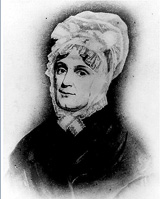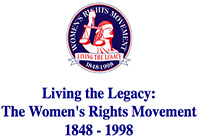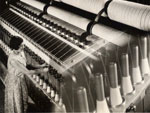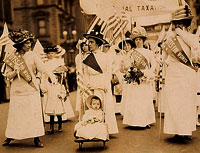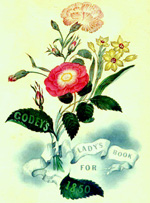What is the cultural terrain staked out by Amelia, the Hollywood biopic about the intrepid flyer Amelia Earhart? The quick shots that precede the opening credits direct attention to the particular themes that the screenwriters Ron Bass and Anna Hamilton Phelan have emphasized in their feature about the flyer. Her airplane taking off into the dark gestures to the mystery of her last flight and her disappearance without a trace. Her celebrity status is indicated by cheering crowds, radio interviews, and photographs, and it fuses seamlessly with her status as an object of heterosexual adoration once we learn that her publicity is orchestrated by her promoter/husband George P. Putnam. There are intimations of Earhart's adventurous and dauntless spirit via a more hopeful takeoff into a dawn sky, expansive aerial views accompanied by soaring music, and a playful exchange between Earhart and her navigator crewman. There are reminders of the enormous risks of her flights, voiced here and later in the film by the concerned husband. Scenes alternate between a serene and smiling Earhart at the controls, the vastness of the ocean, and the ambiguity of the clouds. The plot features the bold and daring female pilot, glamorous celebrity, and gloriously heterosexual romantic partner who had it all, lost it all, and defied death's inevitability by disappearing into a mystery.
Amelia failed to find much of an audience because no one connected with the production was interested in representing anything about the past.
Cast in the principal roles are two-time Oscar-winner Hilary Swank as Amelia Earhart, Richard Gere as Putnam, and Ewan MacGregor as Earhart's admiring lover and aviation pioneer Gene Vidal. The director, Mira Nair, made her name on very distinctive and widely admired films, including Salaam Bombay! (1988), Mississippi Masala (1992), and Monsoon Wedding (2002). The screenwriters Bass and Phelan have produced acclaimed screenplays from original and adapted material. Bass wrote the award-winning original screenplays for Rain Man (1988) and adaptations for The Joy Luck Club (1993) and Snow Falling on Cedars (1999). Phelan was responsible for Mask (1985), Gorillas in the Mist: The Story of Dian Fossey (1988), and Girl, Interrupted (1999). They based Amelia on Mary Lovell's The Sound of Wings (1989) and Susan Butler's East to the Dawn (1997); both have been reissued in connection with the film's release.
Cultural fascination with Amelia Earhart has been extensive. She has been the subject of countless biographies, novels (Jane Mendelsohn, I Was Amelia Earhart, 1997), and films, and her name continues to circulate on school buildings, in poetry, and in song. Her likeness was also used in advertising campaigns for Gap clothing (specifically women's khakis) and Apple computers.
Yet reviewers and audiences responded to Amelia with a notable lack of enthusiasm. Reviewers were fairly unanimous in describing the film's plot and acting as lifeless and in labeling the visual images and dialogue as unbearably clichéd. Audiences voted with their feet, producing minimal ticket sales that lagged far behind the film's cost.
Amelia failed to find much of an audience because no one connected with the production was interested in representing anything about the past. History offered only a “look” for whatever artful stylistic elements could contribute novelty to costume and production design. The filmmakers appear to have been drawn to Earhart's story because they imagined its themes to neatly mirror the present, with Earhart's subjectivity the same as their own. They found Earhart compelling because she seemed to present a contemporary female ideal: successfully competing on previously male terrain while remaining an object of male desire. Imagining a personage from the past as a contemporary heroine promotes her significance as outside of history, as timeless.
Imagining a personage from the past as a contemporary heroine promotes her significance as outside of history, as timeless.
The film's producer Ted Waitt praised Earhart as a role model because she engaged in “the extreme sport” of flying and because “the risks that she faced took an incredible amount of guts” (David Carr, “Earhart's Mystique Takes Wing Again,” New York Times, Oct. 16, 2009, p. B4). Waitt has been described as “something of an adventurer himself,” and one of the many amateur investigators committing time and money to trying to solve the mystery of Earhart's death (ibid.). Amelia was the first feature produced by Avalon Pictures, a subsidiary of Avalon Capital group, a private investment company run by Waitt.
Elgen Long, a retired commercial pilot and the technical consultant on the film, credits Earhart individually as being “responsible for so many things we take for granted these days . . . in aviation and in the rights of women” (ibid.). Swank, who was instrumental in developing the project and is credited as executive producer, describes Earhart as expressing her own values: “I believe that you can live your life the way you want, find love, and experience your dreams. You can have it all. . . . For a short time, Amelia had it all” (Cindy Pearlman, “No Mystery surrounding Amelia Star,” Chicago Sun-Times, Oct. 25, 2009, p. A7). Director Nair's comments have emphasized Earhart as the first modern celebrity, the uncanny physical and oral resemblance achieved by Swank's performance, and also her own personal identification with Earhart—“the more I read about her, the more I thought she is like I was” (Carr, “Earhart's Mystique Takes Wing Again,” B4).
One result of abandoning the exploration of the past as “a foreign country” is that a “timeless” life story mirroring contemporary ideals easily becomes merely conventional. After one quick pleasurable moment of recognizing a 1930s icon as “just like us,” viewers realize that they have seen all this before: personal accomplishment resulting in and affirmed by popular celebrity; female public achievement as compatible with, resulting in, and perhaps even enhancing heterosexual and romantic allure; eventual success as the triumph of individual aspirations and single-minded commitment.
After one quick pleasurable moment of recognizing a 1930s icon as “just like us,” viewers realize that they have seen all this before....
The film's focus on Earhart between 1928 and 1937 requires telescoping whatever was distinctive in her personal historical development. Its insistence on her life as exceptional requires effacing any mention of precedents or peers for the unconventional alternatives she explored. The economy of film storytelling always requires difficult choices, but consider what Amelia left out. The film offers nothing about Earhart's class position: as the daughter of a lawyer-turned-railroad-claims-agent and a mother whose own father was a former federal judge, the president of the local savings bank, and a leading citizen of Atchison, KS. Earhart's mother supported advanced education for her daughters in an era when only 4% of women (and only 6% of men) completed four years of college. The film offers no glimpses of Earhart's childhood pursuits of outdoor physical play, her self-described “special glee” in putting on bloomer-type gym clothes and going out to shock “all the nice little girls.”
The film makes not a single gesture toward explaining the development of Earhart's gender, social, and political consciousness. There are no hints of her experience as a volunteer nurse's aide in a Canadian military hospital during World War I that stimulated both her interest in flying and a lifelong commitment to pacifism. There is no mention of the annotated scrapbook of “women's accomplishments” she kept in the 1920s, focusing on female social workers and reformers who moved into government and public life and women who combined marriage and career. The film does not show the various jobs that Earhart took to pay for her expensive hobby, or her initial flying lessons from a female pilot, nor does it provide any explanation of her stature among female pilots. There are no references to her work at a Boston settlement house or her membership in the National Women's Party or her support for birth control.
The film makes not a single gesture toward explaining the development of Earhart's gender, social, and political consciousness.
Without knowing the significance of Earhart's public endorsement of Franklin D. Roosevelt and the New Deal, the scene of Earhart taking Eleanor Roosevelt out for a night flight over Washington, DC, conveys only giddy adventure and the seductive appeal of flight to an older and presumably more staid woman. Earhart's unconventional marital arrangement and experimentation with sexual freedom is represented as her individual invention, rather than as her participation in alternative norms that were explored by many writers and artists, journalists, and performers in the 1920s. (See Susan Ware, Still Missing: Amelia Earhart and the Search for Modern Feminism [1994].)
In the film, Earhart's female accomplishments are explained in terms of her personal single-minded passion, from watching an airplane flying over Kansas fields to jumping at the chance to be the first female passenger to fly across the Atlantic in 1928 to her record-setting solo flights in 1932 and 1935. There are brief invocations of all-female settings: Earhart answers questions for women's audiences, she competes in (but does not win) a women's air derby; she gives a magnanimous speech claiming that a victory for any female flyer is a victory for her. Using faux newsreels, the film announces, but does not explain, the formation of the 99s, an organization for women pilots. But throughout, the film points to men as Amelia's key influences: her father's psychological legacy and her relationship with Putnam.
Amelia foregrounds romance, although there is controversy among Earhart biographers about how to understand her partnership with Putnam, including its commercial and entrepreneurial aspects. The film portrays his love as genuine and expansively embracing her romance with flight, and in doing so, displaces commerce as the driving force in maintaining her celebrity. An initial hint that Putnam's original interest in Earhart was financial is raised, only to be undermined with two shots predicting their romantic future, showing Putnam easily slipping from managing her appearance to initiating their first kiss. The film imagines Earhart as a willing heterosexual partner, amenable to marriage if, as she explains in a prenuptial letter, that status does not include conventional fidelity, domesticity, or motherhood.
Amelia foregrounds romance, although there is controversy among Earhart biographers about how to understand her partnership with Putnam....
The possibility that commerce and romance are not perfectly compatible does briefly surface but is contained by the narrative. In one scene Earhart complains about the grueling demands of the promotional apparatus that Putnam has arranged: “Here I am jumping through hoops just like the little white horse in the circus.” That comment could direct our attention to the hard work of creating and maintaining popular celebrity. Instead, Putnam emphasizes to Amelia and the audience that there really is no conflict between love and commerce or between love and flying, and that he consistently has Earhart's best interests at heart. He offers his proposal of marriage as a chance to let him give her whatever she wants and promises repeatedly that all his promotional efforts are devoted only to financing her flying. Putnam's true love and Earhart's full assimilation of the commercial apparatus is finally verified in their goodbye preceding what will be her last flight in 1937, where he raises the possibility of cancelling the globe-circling trip, despite huge financial losses, and she answers him that to exit now would be as “stupid as cash withdrawing from the banks.” She then reasserts her transcendent goal as synonymous with her personal integrity because the flight is “not something to show the world, [but] something to show me.”
The film performs a similar sleight of hand in questioning and then affirming Earhart's heterosexual bona fides. The dialogue is coded to reframe Earhart's boyish dress and her camaraderie with male crew and associates under the rubric of a masculine identification that gives way to mature heterosexuality. In a scene between Vidal and Earhart at a nightclub, Earhart, who is glamorously dressed in evening wear, admires a woman's legs. Vidal queries her: “I thought you just wanted to be one of the boys.” Her answer, “that might have been true at one time, but not any more,” immediately precedes the breathless kiss in an elevator that signals the start of their affair.
The ending of the film offers a message of timeless inspiration rather than historical ambiguity and uncertainty.
The ending of the film offers a message of timeless inspiration rather than historical ambiguity and uncertainty. Amelia presents Earhart's disappearance as caused by unsurprising difficulties: an improbable plan for refueling on a tiny, barely visible Howland Island and faulty communications. Although some at the time questioned the plans for this flight, the film's focus here is on Earhart's quest—her resolute courage in the face of death—contrasting her composure with the more ordinary (and “feminine”) response of her navigator Fred Noonan, who anxiously prays. Nair commented that their strategy for the film was to “dramatize the last 20 minutes of her life with the real transmissions from the flight.” She portrayed Earhart's risk taking and her final moments as representing the human condition and hopes that “people will see themselves in her decisions to set aside her fears and live her life to the fullest” (Pearlman, “No Mystery Surrounding Amelia Star,” p. A7). But by this point in the film, Earhart's actual words from the cockpit cannot break through the kinds of visual and verbal clichés the filmmakers have substituted for the flyer's distinctive voice and moment. Amelia leaves the fascinating historical Earhart “still missing.”
